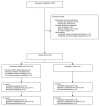Cognitive-behavioural suicide prevention for male prisoners: a pilot randomized controlled trial
- PMID: 26165919
- PMCID: PMC4682193
- DOI: 10.1017/S0033291715001348
Cognitive-behavioural suicide prevention for male prisoners: a pilot randomized controlled trial
Abstract
Background: Prisoners have an exceptional risk of suicide. Cognitive-behavioural therapy for suicidal behaviour has been shown to offer considerable potential, but has yet to be formally evaluated within prisons. This study investigated the feasibility of delivering and evaluating a novel, manualized cognitive-behavioural suicide prevention (CBSP) therapy for suicidal male prisoners.
Method: A pilot randomized controlled trial of CBSP in addition to treatment as usual (CBSP; n = 31) compared with treatment as usual (TAU; n = 31) alone was conducted in a male prison in England. The primary outcome was self-injurious behaviour occurring within the past 6 months. Secondary outcomes were dimensions of suicidal ideation, psychiatric symptomatology, personality dysfunction and psychological determinants of suicide, including depression and hopelessness. The trial was prospectively registered (number ISRCTN59909209).
Results: Relative to TAU, participants receiving CBSP therapy achieved a significantly greater reduction in suicidal behaviours with a moderate treatment effect [Cohen's d = -0.72, 95% confidence interval -1.71 to 0.09; baseline mean TAU: 1.39 (S.D. = 3.28) v. CBSP: 1.06 (S.D. = 2.10), 6 months mean TAU: 1.48 (S.D. = 3.23) v. CBSP: 0.58 (S.D. = 1.52)]. Significant improvements were achieved on measures of psychiatric symptomatology and personality dysfunction. Improvements on psychological determinants of suicide were non-significant. More than half of the participants in the CBSP group achieved a clinically significant recovery by the end of therapy, compared with a quarter of the TAU group.
Conclusions: The delivery and evaluation of CBSP therapy within a prison is feasible. CBSP therapy offers significant promise in the prevention of prison suicide and an adequately powered randomized controlled trial is warranted.
Keywords: Cognitive therapy; prison; randomized controlled trials; suicide prevention.
Figures
References
-
- Beck AT, Epstein N, Brown G, Steer RA. An inventory for measuring clinical anxiety: psychometric properties. Journal of Consulting and Clinical Psychology. 1988;56:893–897. - PubMed
-
- Beck AT, Steer RA. Manual for the Beck Hopelessness Scale. The Psychological Corporation; San Antonio, Texas: 1988.
-
- Beck AT, Steer RA. Manual for the Beck Scale for Suicide Ideation. The Psychological Corporation; San Antonio, Texas: 1991.
-
- Beck AT, Steer RA, Brown GK. Manual for the Beck Depression Inventory-II. The Psychological Corporation; San Antonio, Texas: 1996.
-
- Birmingham L. The mental health of prisoners. Advances in Psychiatric Treatment. 2003;9:191–199.
Publication types
MeSH terms
Associated data
Grants and funding
LinkOut - more resources
Full Text Sources
Medical
Miscellaneous



